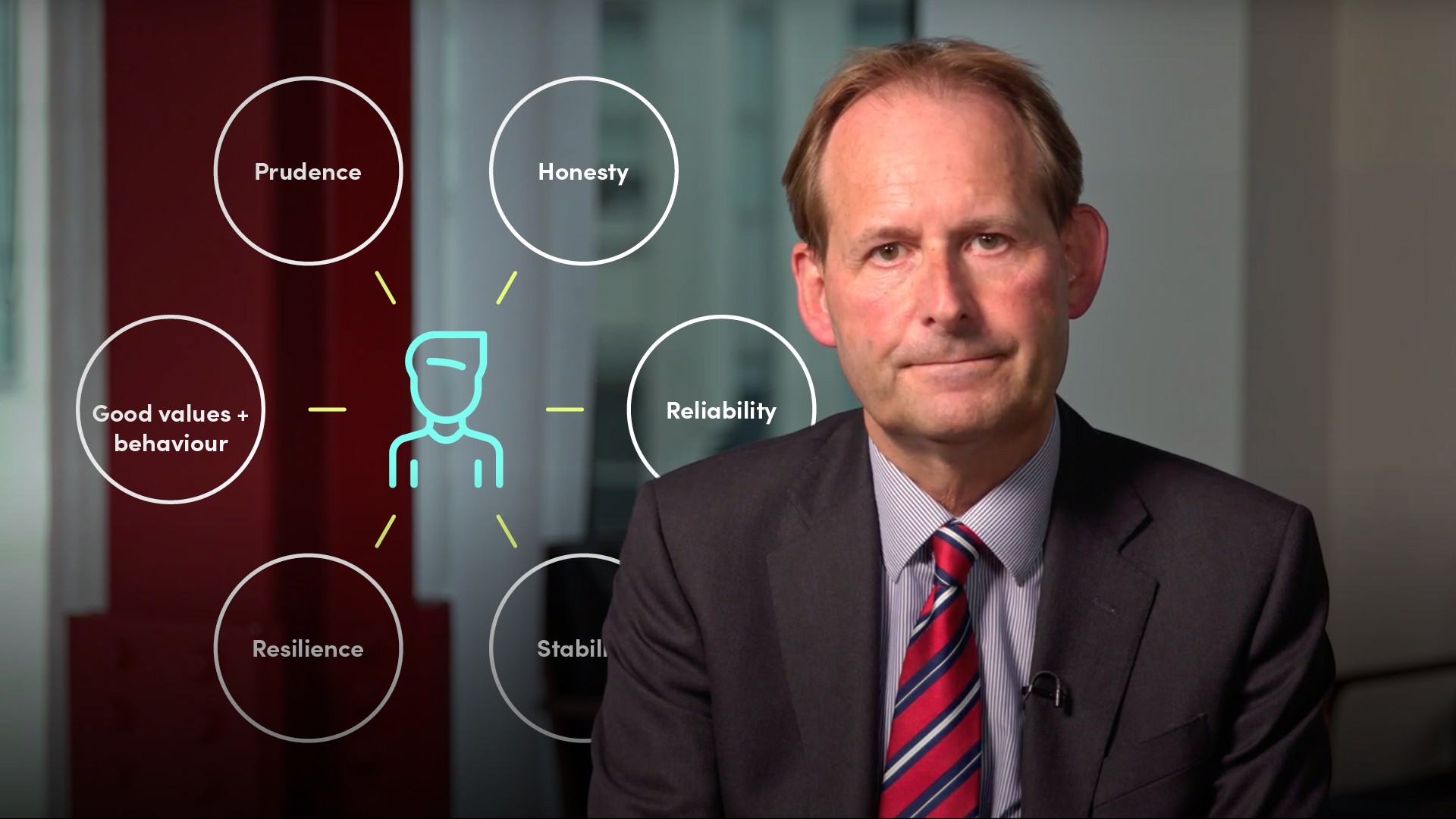
The PARTS Bank Lending Framework

Paul Taylor
35 years: Corporate banking
In this second part of the series, Paul provides an overview of the three Cs for assessing the creditworthiness of a potential borrower. He also explains the PARTS framework.
In this second part of the series, Paul provides an overview of the three Cs for assessing the creditworthiness of a potential borrower. He also explains the PARTS framework.

The PARTS Bank Lending Framework
11 mins 56 secs
Key learning objectives:
Outline the 3Cs used to assess the creditworthiness of a potential borrower
Understand the PARTS acronym and describe how it is used to assess creditworthiness
Identify how banks determine the capital behind a borrower
Overview:
The three Cs and PARTS framework are useful tools for assessing the creditworthiness of a potential borrower. These frameworks can be used to assess both individuals and firms alike.
What are the 3Cs used to assess creditworthiness of a potential borrower?
- Character - the standing and reputation of the person or company
- Capability - split into two equally important parts: technical/occupational & financial/compliance
- Capital - the net worth of the person or firm
What are the ideal characteristics of a borrower and how can these traits be determined?
The ideal characteristics of a borrower are honesty, reliability, stability, resilience, good values & behaviours and prudence.
This is not always easy to establish, so it is important to ask good questions to bring out key information on background, education and current circumstances.
Company borrowers should be prepared to disclose confidential information under disclosure agreements in order to qualify for lending facilities.
Character will be assessed by looking at ownership, business structure, history, reputation, longevity, the nature of the business, how it promotes itself, and the people it employs.
How do banks determine a “capable” borrower?
For an individual:
- Technical/Occupational capability
- How good are they at what they do?
- How much experience do they have?
- What professional or technical qualifications do they have?
- Financial/Compliance capability
- If they have been working for some time, do they have savings, provisions for a pension, appropriate insurance?
- What other borrowing do they have, and have they kept up with repayments?
- Do they have dependents and other financial obligations to consider?
For a firm:
- Technical/Occupational capability
- How well established is it?
- Is it successful, profitable, sustainable?
- What kind of competitive advantage, or market share, does it have?
- Focus on its management, strategy, performance and resilience: key man dependency, evidence of strategic and contingency planning, and workforce stability.
- Financial/Compliance capability
- Does a company need a more disciplined approach, a new accountant?
- What are the staff turnover rates?
- Do they pay staff more than the average for the sector?
- How do their sales figures and profit margins relate to similar firms?
- Is there an overdependence on certain suppliers or customer outlets?
- Are there any regulatory obligations?
How do banks determine the capital behind a borrower?
A bank will try to assess what funds or assets an individual or firm have ‘behind them’ or ‘in reserve’. They will try to determine the net worth of the person or firm by looking at savings, other assets and any equity in a house or business.
For an individual:
- Establish ‘source of funds’ - ‘earned’ rather than inherited
For a firm:
- Determine whether there is cash in the bank, a strong equity structure or ownership of property or other assets
- Ideally, they do not have assets that depreciate in value rapidly, or those that would have no alternative use, if the firm failed
- Determine whether they have liquidity and cashflow
- Is the source of cash windfall earnings? Perhaps a ‘one off’ sale of a property or other assets that is not repeatable, rather than sustainable profits and retained earnings
- Is there a surplus of earnings over expenditure?
What does PARTS stand for in a PARTS model, and how is each term used to assess the credibility of a potential borrower?
PARTS is an acronym comprising - Purpose, Amount, Repayment, Term and Security- Purpose - The first thing to determine about a loan is its purpose - at a basic level, is it appropriate, reasonable, within the banks lending policy and of course legal?
- Amount - When considering the amount requested, consider what the total cost is and whether the borrower is making a contribution.
- Repayment - Repayment relates to how the loan or borrowing is going to be repaid - usually in monthly installments, but very occasionally as a so called single or ‘bullet’ repayment at the end of the loan period.
- Term(s) - The term or duration of borrowing needs to be reasonable, and the terms and conditions upon which the borrowing might be agreed should be discussed.
- Security - Security refers to the taking of security, or a guarantee, in the event of default.

Paul Taylor
There are no available Videos from "Paul Taylor"

